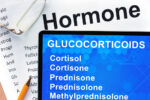Preventive Antibiotics in AAV May Reduce Risk of Severe Infections
Treatment may help vasculitis patients on immunosuppressives

Preventive, or prophylactic treatment with certain antibiotics can reduce the risk of severe infections for people with ANCA-associated vasculitis (AAV) who are receiving immunosuppressive treatment, a new analysis shows.
Specifically, good results were found in a clinical trial with a combination of antibiotics known as TMP/SMX.
“This … is the first analysis of data derived from [an appropriately-controlled] trial providing evidence for the role of low-dose TMP/SMX in preventing severe infections in patients with AAV,” the researchers wrote.
The study, “Risk factors for serious infections in ANCA-associated vasculitis,” was published in the Annals of the Rheumatic Diseases.
The 1st analysis of preventive antibiotics in AAV, per researchers
AAV is caused by the production of anti-neutrophil cytoplasmic autoantibodies, or ANCAs, that abnormally bind to certain immune cells, leading to their overactivation and to blood vessel damage.
Treatments for AAV generally aim to reduce immune activity, which can help to control disease symptoms. However, these therapies also may increase patients’ vulnerability to infections.
“Since infections are one of the leading causes of death in patients with AAV, strategies to prevent or minimize infections are of importance,” the researchers wrote.
Due to the risk of infection, some therapy guidelines recommend that AAV patients who are starting on them should be given preventive treatment with bacteria-killing antibiotics.
In particular, the antibiotic combo trimethoprim-sulfamethoxazole (TMP/SMX) is commonly used, with a specific aim to kill certain bacteria that can cause serious pneumonia.
To identify risk factors associated with severe infections, an international team of researchers analyzed data from the Phase 2/3 RAVE trial (NCT00104299), completed in 2010. That study compared two treatment regimens — rituximab and cyclophosphamide — for inducing disease remission in 197 AAV patients.
Both treatments work by suppressing the immune system. Cyclophosphamide is a chemotherapy drug, used to treat various types of cancer, that works by slowing or stopping cell growth.
Rituximab, meanwhile, specifically targets B-cells, the immune cells responsible for producing antibodies, including those involved in the abnormal immune responses that drive AAV. Rituximab is sold as Rituxan in the U.S. and MabThera in Europe, and is available as biosimilars.
A recent study using data from RAVE and another trial suggested that rituximab is superior to cyclophosphamide at inducing remission in people with certain types of ANCA vasculitis.
During the first 18 months of the RAVE trial, 22 participants developed severe infections, with 18 (81.8%) occurring in the first six months.
About two-thirds of these severe infections (68.2%) affected the respiratory tract; others involved the digestive system, urinary tract, or the skin. One patient died due to a severe infection.
According to the trial’s protocol, all participants were supposed to receive preventive treatment with the antibiotics combo TMP/SMX for as long as they were on immunosuppressive therapy. However, this did not occur in 17 patients (8.6%) — either because they did not comply with the recommendation or because they received other antibiotics due to allergies.
Six of these 17 patients (35.3%; three in each treatment group) experienced a severe infection.
Analysis: preventive antibiotics lower risk by nearly 80%
Statistical models showed that the risk of severe infection was significantly lower, by nearly 80%, in patients given TMP/SMX, compared with those who did not receive this prophylaxis. Similar results were seen for patients on both rituximab and cyclophosphamide induction therapy.
These results “reveal a significant benefit” for prophylactic TMP/SMX in AAV patients undergoing immunosuppressive treatment, the researchers wrote. Based on these findings, the team noted that the benefits of this preventive antibiotics treatment may extend beyond only preventing certain forms of pneumonia.
Certain immune measures, assessed at trial’s start, also were associated with a higher infection risk in the statistical models. Specifically, patients with low numbers of B-cells positive for the marker CD19 and those with higher blood levels of IgM (a type of antibody) were at increased risk of future severe infection.
These findings may be useful in identifying patients at high infection risk who may benefit from closer monitoring, the researchers noted.
Since infections are one of the leading causes of death in patients with AAV, strategies to prevent or minimize infections are of importance.
“The observed association between severe infections and baseline total [CD19-positive] B cell number … might draw further attention to careful monitoring of patients with AAV who initially have low [CD19-positive] B cells irrespective of the modality of induction regime used,” the team wrote.
“Reduced B cell subpopulations at start of treatment might be a useful correlate of reduced immunocompetence,” they added.
Among the study’s limitations, the researchers noted that the safety profile of prophylactic TMP/SMX was not the trial’s focus, and therefore remains largely unclear.
Since most infections occurred in the first few months after starting treatment, they speculated that TMP/SMX prophylaxis could be stopped once patients are off immunosuppressive therapies. That could minimize the risk of side effects from long-term antibiotics treatment, the team noted.
“Nevertheless, [an appropriately-controlled] trial addressing this question is necessary, that is, looking at differences of prophylaxis prescribed for 6 months in comparison to a prolonged prescription during long-term follow-up,” the team wrote.









